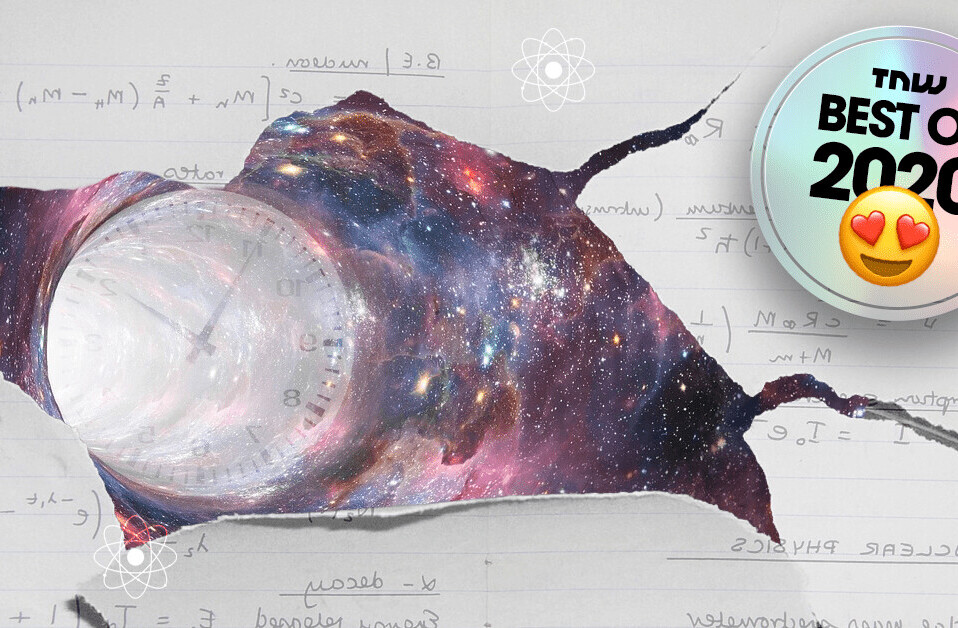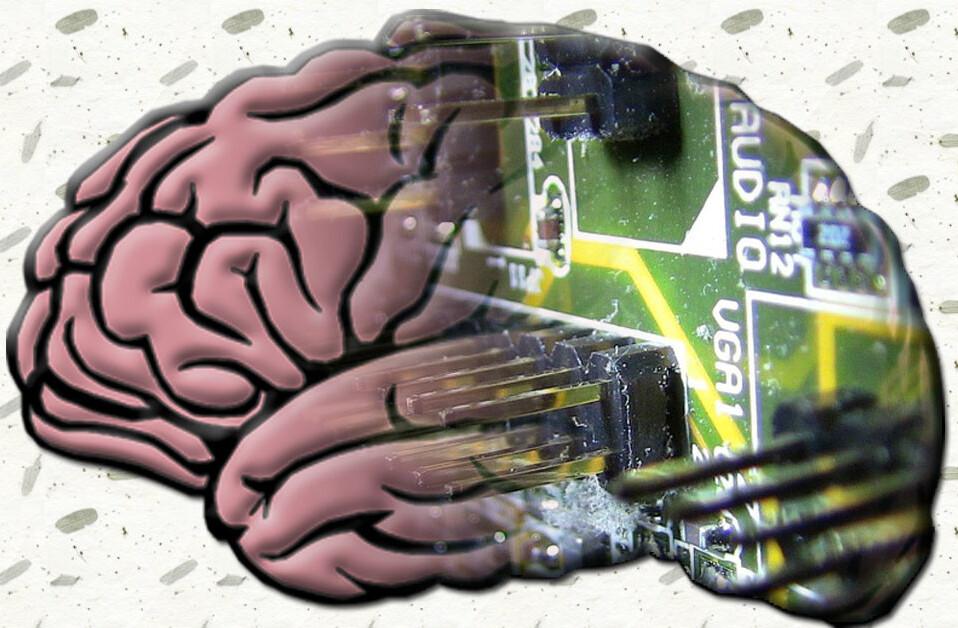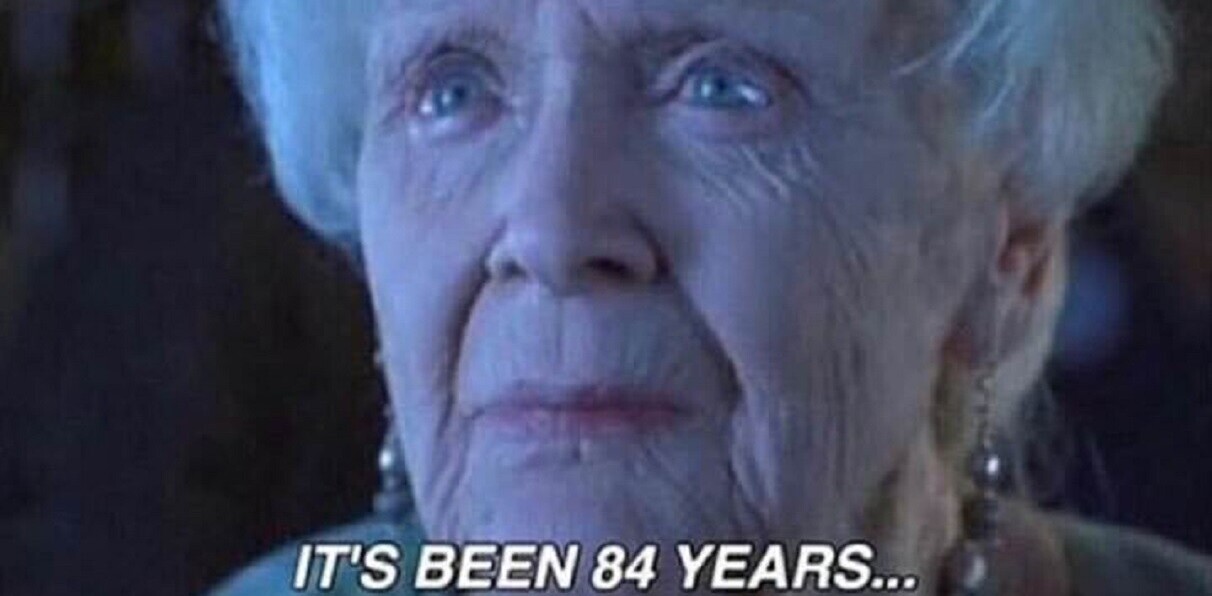
A physics student at the University of Queensland recently published a paper indicating they’d ‘squared’ the math when it comes to time-travel. Not only should it theoretically be possible to travel back in time, according to the numbers, but you could do whatever you want without making any fundamental changes to the present.
In other words: the ‘paradox of time travel‘ may not be real.
The problem goes like this: your eccentric old scientist buddy turns a DeLorean into a time machine. Before he can teach you how to use it properly, he’s murdered by terrorists. While fleeing the scene in said DeLorean you accidentally travel back in time to the month before your parents fell in love and, whoops wouldn’t you know it, you unintentionally screw things up. Now they might not kiss at the big dance and end up having kids, so your very existence hinges upon your ability to right the wrongs you’ve caused so you can get… back to the future.
[Read: Are EVs too expensive? Here are 5 common myths, debunked]
That’s the ‘paradox of time travel.’ Put less verbose: a time traveler’s actions in the past could cause a ripple effect that makes their purpose for time travel either not exist in the present they came from or causes the traveler themselves not to exist (also called the ‘grandfather paradox‘).
According to Germain Tobar, the undergrad who crunched the numbers and wrote a research paper titled “Reversible dynamics with closed time-like curves and freedom of choice” that was recently published in the Classical and Quantum Gravity journal, the Back to the Future plot gets time travel all wrong.
Per the paper:
We have developed a characterization of deterministic processes in the presence of closed time-like curves (CTCs) for an arbitrary number of localized regions. Our proofs have demonstrated that non-trivial time travel between multiple regions is consistent with the absence of a logical paradox as long as once the outputs of all but two regions are fixed, at most one-way signaling is possible.
The big idea here involves CTCs, or closed time-like curves. These are direct descendants of Albert Einstein’s famous theory of relativity. Conceived by renowned mathematician Kurt Gödel, CTCs are essentially little time loops.
According to a paper from researchers at the Einstein Institute of Applied Relativity (EIAR) in Jerusalem:
“Time-like curves” are any paths through space that are permitted for massive particles like electrons, protons, or spaceships. “Closed” time-like curves are any paths that end up back where and when they started, hence closed curves in the 4-dimensional world of space and time.
There’s evidence for CTC’s in classical reality. Take the following picture for example:

We can infer that the ball is in motion. This shows that we understand the ball’s past states and it gives us the ability to predict where the ball, unfettered, will end up. This indicates that the past is directly connected to the present.
Where things get interesting is in the idea that specific “whens” in the past are directly connected to “whens” in the present and, according to the research, these are basically immutable.
Dr. Fabio Costa, the second author on the paper and Tobar’s supervisor on the project, posited in a press release that this means time travelers wouldn’t be able to go back in time and stop an event such as the pandemic. Try as they might, the universe just won’t allow it.
According to Costa:
Say you traveled in time, in an attempt to stop COVID-19’s patient zero from being exposed to the virus.
However if you stopped that individual from becoming infected—that would eliminate the motivation for you to go back and stop the pandemic in the first place.
This is a paradox—an inconsistency that often leads people to think that time travel cannot occur in our universe.
Tobar continues:
In the coronavirus patient zero example, you might try and stop patient zero from becoming infected, but in doing so you would catch the virus and become patient zero, or someone else would.
No matter what you did, the salient events would just recalibrate around you.
This would mean that—no matter your actions—the pandemic would occur, giving your younger self the motivation to go back and stop it.
So there you have it. If we combine Einstein’s theory of relativity with Gödel’s CTCs and Tobar’s math-based interpretation we have a recipe for butterfly-effect-free time travel.
That means we can all go bananas with time travel vacations and step on as many prehistoric bugs as we want. Now that we’ve got the science and math sorted, it’s an engineering problem right? Your move Elon.
So you’re interested in science? Then join our online event, TNW2020, where you’ll hear how artificial intelligence is transforming industries and businesses.
Get the TNW newsletter
Get the most important tech news in your inbox each week.





